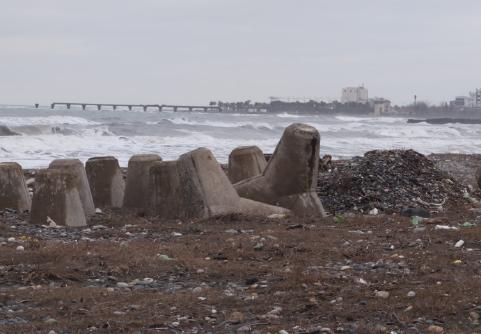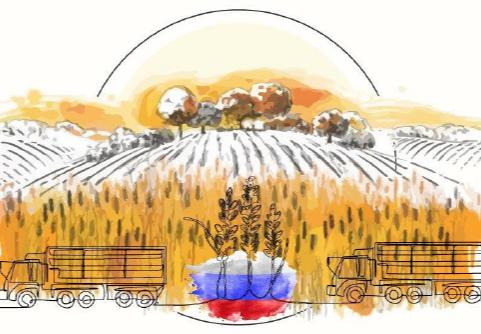Author : Khatuna Khabuliani

Recently, notions of writing, literacy, fiction and its content have intersected with absurd statements of some politicians and a parodic revival of the seemingly forgotten Soviet censorship. Unfortunately, it is not a novelty in our reality when a fiction text and an author are identified, sometimes even the punishment of a writer for a character’s behaviour or opinions expressed may be called for. For some, discussions in the academic space are indistinguishable from political rhetoric; respect for historical figures is equated with blind idolatry, and for the most part, we are dealing with rather insidious demagogy and manipulation targeted at the less educated part of society.
It was against this tense and surrealistic backdrop that Lia Bagrationi’s solo show ‘Universal Writing’ took place at the Dédicace Gallery. The exhibition was certainly not for those involved in the aforementioned activities, but it is never too late to become interested in education and reflection on the history of writing.
In her talk, Lia Bagrationi skilfully and accurately recounts her childhood memories when, before learning to read and write, she first became interested in writing and, imitating her elders, began to fill in pages with imitations of calligraphy. Later, she combined those early, childlike pages covered with “scribbles” with the basics of writing. “Playing grown-ups”, a favourite pastime of pre-school children, often involves the imitation of “slanting” handwriting and has often been a source of inspiration for artists; it seems to express the archetypal signs, the childhood of civilisation, still undeciphered codes of calligraphy, which are then structured and transformed into alphabets or hieroglyphs.
Theoreticians have frequently highlighted the allure that stems from observing writing that eludes our understanding. For instance, the enchantment of lace ornamentation can captivate those unfamiliar with Oriental calligraphy, where the content of the writing may not be entirely benevolent. In such instances, the observer appreciates the formal beauty of the writing without grasping its meaning. Artistic creations in the vein of Assamese painting, akin to those crafted by Cy Twombly, are connected to the influences of nature, spontaneity, and simultaneously, cultural elements. Writing serves as direct evidence of civilization’s existence, and Assamese painting, in turn, manifests as an indicator of civilization’s complex, occasionally tumultuous nature, as well as periodic instances of inevitable stagnation and decay. Peter Schwenger’s work, “Assemic: The Art of Writing,” associates the history of the term with the contributions of Roland Barthes and Jacques Derrida. Specifically, Derrida’s text, “Extensions,” refers to the spaces between words as “assemic intervals,” where signification becomes possible without conveying a specific meaning
The term “asemic” is formed from the Greek sema (“sign”), prefixed with the negation “a”. According to the common opinion among art historians, Assamese painting existed even before the emergence of this term, as evidenced by quasi-calligraphic samples of visual poetry of different eras, sketches, etc.
Given our experience, I wonder how we can define Lia Bagrationi’s asemic project. Where do our thoughts lead us when we find ourselves in this spectacular, literally multi-layered exposition? Continuous chains of the infinity symbol adorn the walls, gallery stained glass windows, felt mats, parchment paper and canvases. Felt ‘layered’ curtains of different sizes and colours descend from the ceiling and are periodically covered with transparent fabric. The installation – the symbolic layers of the palimpsest speak a language of texture – the thick, fibrous structure of felt is itself a piece of vast information with an energy field, an archaic and ritual memory; the continuous line of ornamental pseudo-calligraphy inscribed on it enriches the endless text with implicit content.
Here and there, parts of the “text” are “crossed out” with a red or black “marker”. The exposition represents the layers of one large text, one great narrative, an eternal story that has been rewritten and unfolded many times, always alive and continuing history. Lia Bagrationi’s interest in form-texture and its content is constantly evolving through different projects, always aiming at meaningful roots, a universal idea. The extension of the relationship between form and content appeared as a strong artistic message in the performance when the solidified form of the granular content of the broken clay pot remained as a sign of emptiness. The title of the project was ‘This is the Pot’ (2015), and the epigraph was Lao Tzu’s phrase: “We shape clay into a pot, but it is the emptiness inside that holds whatever we want.” An earlier installation – ‘Illusion of Money’ (2011) – presented a collection of universal money signs with unexpected hybrids of clay and various precious metals. The interest in universal models that have infinite hypostases in the material world of materials and forms defines the artist’s vision and offers the viewer a variety of creative approaches.
The works of Lia Bagrationi are poetically-philosophical, they touch upon eternal, unchanging themes, the drama of transience and the cyclical nature of this world, although these forms always express a modern, new and lively feeling.










